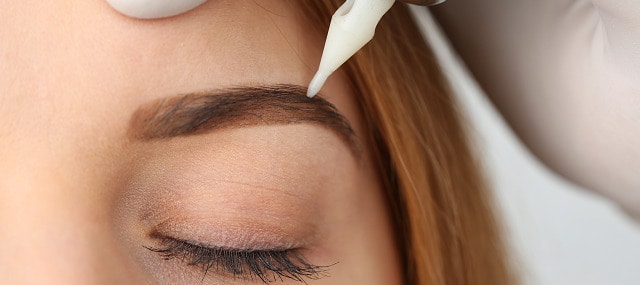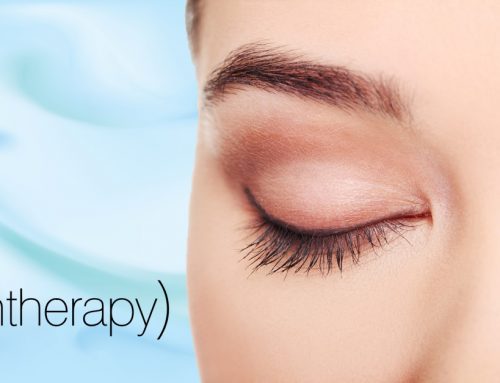Sometimes it’s not about threading to get those perfect eyebrows. In fact, for many women, it’s usually about adding some color using a pencil.
There are many reasons for sparse eyebrows: over plucking, nutrition deficiency (being low in vitamins D and B-12 have links to thinning eyebrows), hypothyroidism, eczema, spot baldness, and plain old aging. As we age, all of our hair becomes drier and more brittle.
Not everyone has the talent or — let’s face it — the time to shade in the perfect eyebrow. Plus, if you go swimming or wipe your face in public, you stand to lose that perfect look you worked on earlier in the day.
Trying to “regrow” eyebrows doesn’t work for everyone, and not everyone wants to spend time on something that may or may not work a few months down the road.
If you want instant results that last, micropigmentation, or cosmetic tattooing, might be the perfect solution to your sparse eyebrows. This procedure is used for semi-permanent eyebrow liner, eyeliner, lip color, and other makeup techniques.
Like other types of tattoos, micropigmentation carries some risk. These include line asymmetry, an allergic reaction to the pigments being used, and infection. Talk to a skincare professional to find out if this is the right treatment for you.
About the Procedure
When you come in for the procedure, an initial sketch will be drawn over the area to define the color and shape. Once the color and shape are approved, a numbing cream is applied to the spot before the procedure.
Micropigmentation is often applied to more sensitive areas of the face, but the procedure is generally well-tolerated and not nearly as painful as a decorative tattoo. Tattoo needles reach deeper into the skin.
Oftentimes, at least two sessions are needed to reach desired results.
After the Procedure
There’s going to be redness and peeling following a micropigmentation treatment. Ice packs and liberal amounts of an approved moisturizer will help in the coming days.
In the first 24 hours after the procedure, avoid vigorous exercise and sweating. In the first three to four days, avoid harsh soaps and only pat-dry your face. For at least a week, avoid touching the pigmented area. Make sure you steer clear of tanning beds and the sun until the treated area is completely healed.
You’ll want to avoid Retin-A, certain moisturizers, and exfoliants on all micropigmented areas. These can cause pigments to fade and lighten prematurely.
By Day 10, the final color should be stabilized, though it may continue to fade slightly requiring additional touch ups.
About Jennifer
Jennifer Curtin is a medical aesthetician who is nationally recognized for her expertise in medical skin care. With more than 20 years of experience in medical aesthetics, she is dedicated to the aesthetic industry and has received awards of merit including the International CIDESCO Certification, Assistant Cosmetic Laser Practitioner and National Leadership Award. Jennifer is also an expert in micropigmentation and the president of Skintherapy, which is located in the Buckhead section of Atlanta. To schedule an appointment with Jennifer, call 404-358-2961.





